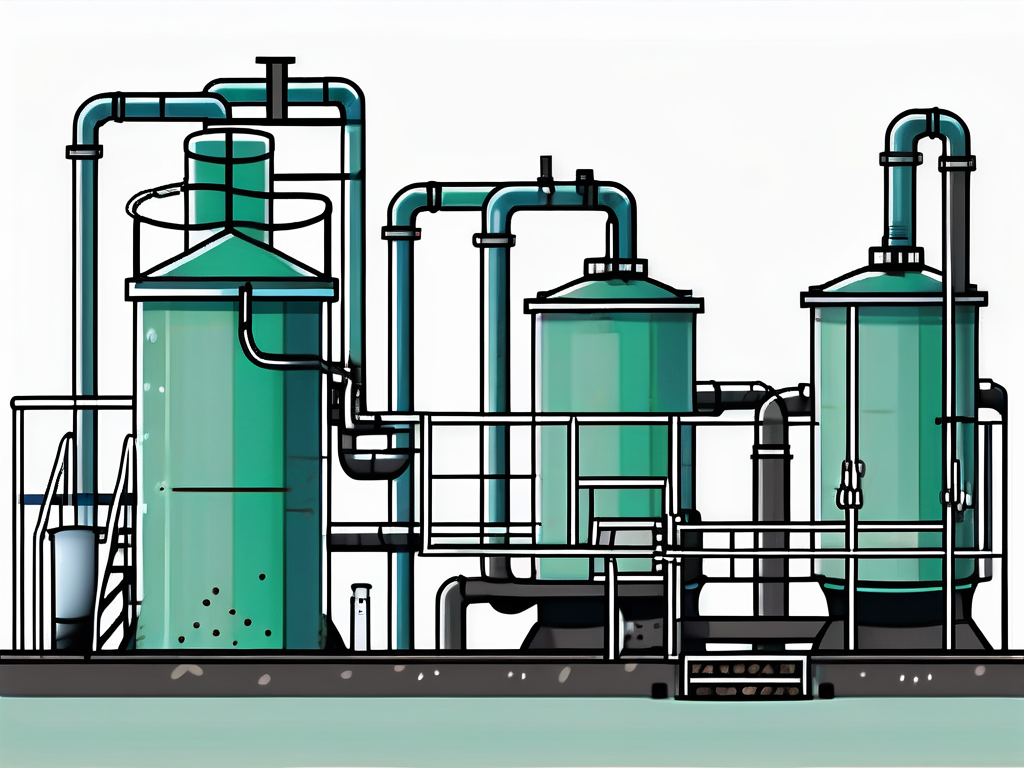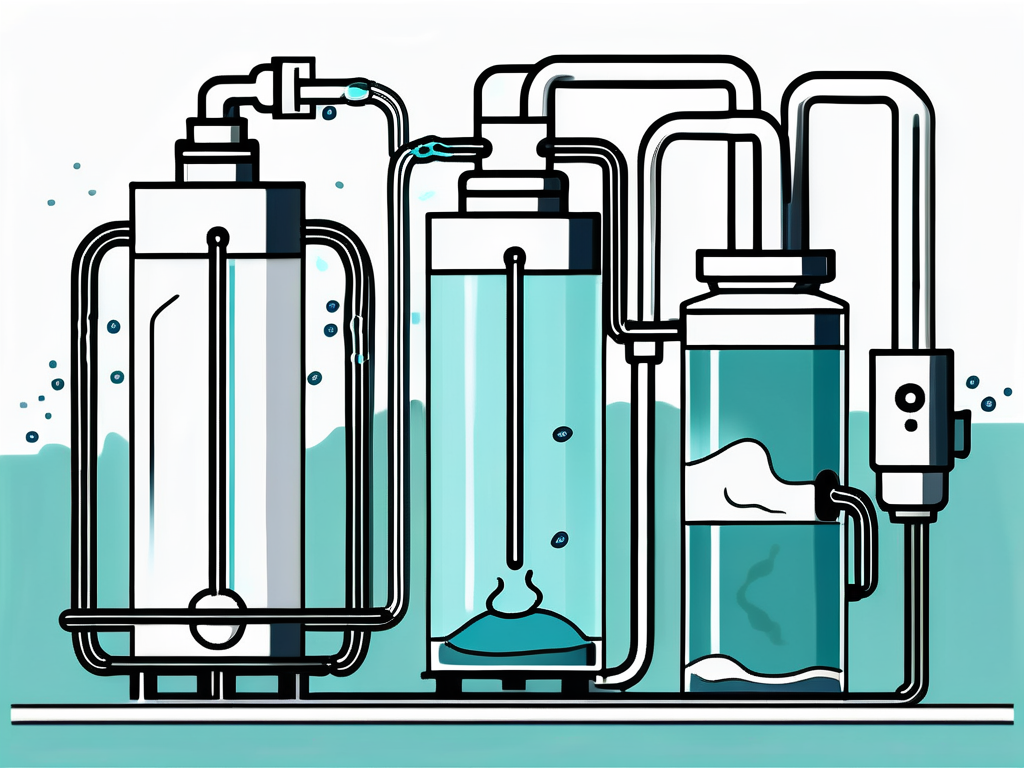
Water Recycling: Wastewater Treatment Explained
Water recycling, also known as water reclamation or water reuse, is a process that involves the treatment of wastewater to make it safe and suitable for specific uses. This glossary article will delve into the intricacies of wastewater treatment, explaining the various stages and techniques involved in the process, and the significance of each in the broader context of water recycling.
Wastewater treatment is a critical component of water management, particularly in regions where water scarcity is a pressing issue. By treating and recycling wastewater, we can conserve our water resources, reduce our reliance on freshwater sources, and mitigate the environmental impacts associated with water extraction and disposal.
What is Wastewater?
Wastewater is essentially any water that has been adversely affected in quality by anthropogenic influence. It can include substances such as human waste, oil, soap, and food scraps. Wastewater is produced by a variety of sources, including domestic, industrial, commercial and agricultural activities, and stormwater runoff.
Wastewater contains a wide range of contaminants, including physical, chemical, and biological pollutants. The concentration and type of pollutants in wastewater can vary significantly, depending on the source and the use of water from which it originates. The treatment of wastewater involves the removal or reduction of these contaminants to levels that are safe for the intended reuse or for discharge into the environment.
Types of Wastewater
There are several types of wastewater, each with its own unique set of characteristics and treatment requirements. These include municipal wastewater, which is generated by households and commercial establishments; industrial wastewater, which is produced by industries such as manufacturing and mining; and agricultural wastewater, which comes from farming activities.
Stormwater runoff is another significant source of wastewater. This is water from rain or melting snow that flows over the ground surface, picking up pollutants such as sediment, chemicals, and debris along the way. Stormwater runoff can have a significant impact on the quality of our water bodies if not properly managed and treated.
Wastewater Treatment Process
The wastewater treatment process involves several stages, each designed to remove or reduce specific types of contaminants. The complexity and scale of the treatment process can vary significantly, depending on the quality of the incoming wastewater and the intended use of the treated water.
The primary goal of wastewater treatment is to produce an effluent that will not adversely affect the environment or pose a risk to public health when discharged or reused. This is achieved through a combination of physical, chemical, and biological treatment processes.
Preliminary Treatment
The first stage of the wastewater treatment process is known as preliminary treatment. This stage involves the removal of large and coarse solids that could potentially damage the treatment plant equipment or interfere with the subsequent treatment processes. Preliminary treatment typically involves screening and grit removal.
Screening involves passing the wastewater through screens to remove large objects such as rags, sticks, and plastic materials. Grit removal, on the other hand, involves the removal of heavy inorganic solids such as sand and gravel that could cause excessive wear and tear on the treatment plant equipment.
Primary Treatment
The next stage in the wastewater treatment process is primary treatment. This stage involves the removal of suspended solids and organic matter from the wastewater. Primary treatment typically involves sedimentation, where the wastewater is held in a quiescent basin to allow the solids to settle to the bottom by gravity.
The settled solids, known as sludge, are then removed and treated separately. The remaining liquid, known as effluent, is then passed on to the next stage of treatment. Primary treatment can remove up to 60% of the suspended solids and 35% of the biochemical oxygen demand (BOD) from the wastewater.
Secondary Treatment
Secondary treatment is the third stage of the wastewater treatment process. This stage involves the removal of dissolved and colloidal organic matter from the wastewater. Secondary treatment typically involves biological processes, where microorganisms are used to consume the organic matter in the wastewater.
The most common type of secondary treatment is the activated sludge process, where the wastewater is mixed with a suspension of microorganisms, known as activated sludge. The microorganisms consume the organic matter in the wastewater, converting it into new cell material and gases such as carbon dioxide and methane.
Advanced Wastewater Treatment
Advanced wastewater treatment, also known as tertiary treatment, involves the removal of nutrients such as nitrogen and phosphorus, and other contaminants that were not removed during the primary and secondary treatment stages. This stage is necessary when the treated water is intended for specific uses such as irrigation, industrial processes, or discharge into sensitive water bodies.
Advanced wastewater treatment can involve a variety of processes, including filtration, disinfection, nutrient removal, and the removal of specific contaminants such as heavy metals. The choice of processes depends on the quality of the incoming wastewater and the intended use of the treated water.
Filtration
Filtration is a process that involves the removal of suspended solids from the wastewater. This is typically achieved by passing the wastewater through a filter medium that traps the solids. Filtration can significantly improve the clarity of the treated water and is often necessary when the water is intended for uses such as irrigation or industrial processes.
There are several types of filtration processes, including sand filtration, membrane filtration, and cloth filtration. The choice of filtration process depends on the quality of the incoming wastewater and the intended use of the treated water.
Disinfection
Disinfection is a process that involves the inactivation or destruction of pathogenic microorganisms in the wastewater. This is typically achieved through the use of disinfectants such as chlorine, ultraviolet (UV) light, or ozone. Disinfection is a critical step in the wastewater treatment process, as it ensures that the treated water is safe for reuse or discharge into the environment.
There are several methods of disinfection, including chemical disinfection, UV disinfection, and ozonation. The choice of disinfection method depends on the quality of the incoming wastewater, the intended use of the treated water, and the specific disinfection requirements.
Sludge Treatment
Sludge treatment is an important component of the wastewater treatment process. The sludge generated during the primary and secondary treatment stages contains a high concentration of organic matter and pathogens, and must be treated before it can be safely disposed of or reused.

Sludge treatment involves several processes, including thickening, digestion, dewatering, and disposal. The goal of sludge treatment is to reduce the volume of the sludge, stabilize the organic matter, and inactivate or destroy the pathogens.
Thickening and Digestion
Thickening is the first step in the sludge treatment process. This involves the concentration of the sludge to reduce its volume and make it easier to handle. Thickening can be achieved through a variety of methods, including gravity thickening, flotation thickening, and centrifugation.
After thickening, the sludge is typically subjected to digestion. This is a biological process where microorganisms are used to stabilize the organic matter in the sludge, reducing its volume and odor potential. Digestion also helps to inactivate or destroy the pathogens in the sludge, making it safer for disposal or reuse.
Dewatering and Disposal
After digestion, the sludge is typically subjected to dewatering. This involves the removal of water from the sludge to further reduce its volume and make it easier to handle. Dewatering can be achieved through a variety of methods, including belt filter presses, centrifuges, and drying beds.
Once the sludge has been dewatered, it can be disposed of or reused. Disposal options include landfilling, incineration, and ocean disposal. Alternatively, the sludge can be reused as a soil conditioner or fertilizer, provided it meets the necessary quality standards.
Water Recycling
Water recycling is the process of treating wastewater to a standard that allows it to be reused for a variety of purposes. This can include non-potable uses such as irrigation, industrial processes, and toilet flushing, as well as potable uses such as drinking and cooking, provided the necessary treatment standards are met.

Water recycling can provide a sustainable and reliable source of water, particularly in regions where water scarcity is a pressing issue. It can also help to reduce the environmental impacts associated with water extraction and disposal, and contribute to the conservation of our water resources.
Types of Water Recycling
There are several types of water recycling, each with its own unique set of treatment requirements and potential uses. These include non-potable reuse, where the recycled water is used for purposes such as irrigation, industrial processes, and toilet flushing; and potable reuse, where the recycled water is treated to a standard that allows it to be used for drinking and cooking.
Non-potable reuse typically requires less stringent treatment than potable reuse, as the recycled water is not intended for human consumption. However, it still requires adequate treatment to ensure that it is safe for the intended use and will not pose a risk to public health or the environment.
Benefits of Water Recycling
Water recycling offers a range of benefits, both environmental and economic. By treating and reusing wastewater, we can conserve our water resources, reduce our reliance on freshwater sources, and mitigate the environmental impacts associated with water extraction and disposal.
From an economic perspective, water recycling can provide a reliable and cost-effective source of water, particularly in regions where water scarcity is a pressing issue. It can also help to reduce the costs associated with water extraction and disposal, and provide a source of revenue through the sale of recycled water.
Conclusion
Wastewater treatment and water recycling are critical components of sustainable water management. By treating and reusing wastewater, we can conserve our water resources, reduce our environmental footprint, and provide a sustainable and reliable source of water for a variety of uses.
While the process of wastewater treatment can be complex and challenging, it is a necessary step in ensuring that our water resources are managed in a sustainable and responsible manner. Through continued research and innovation, we can continue to improve the efficiency and effectiveness of our wastewater treatment processes, and expand the potential uses of recycled water.



